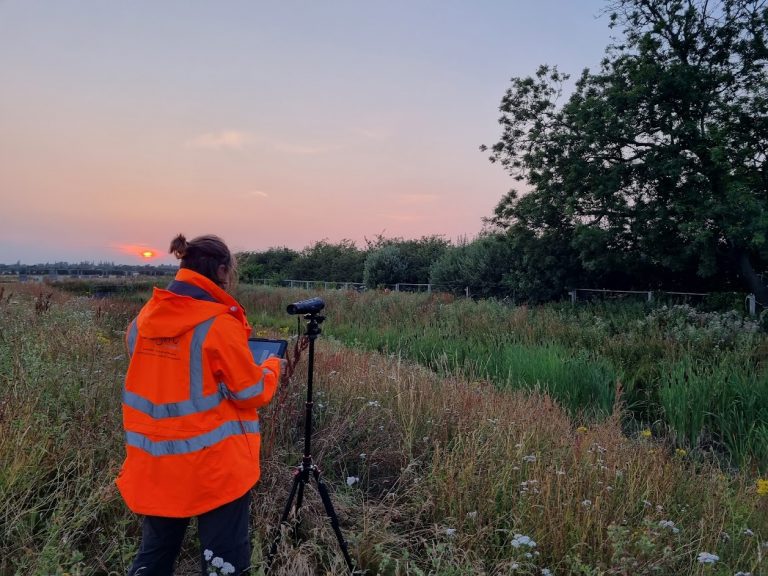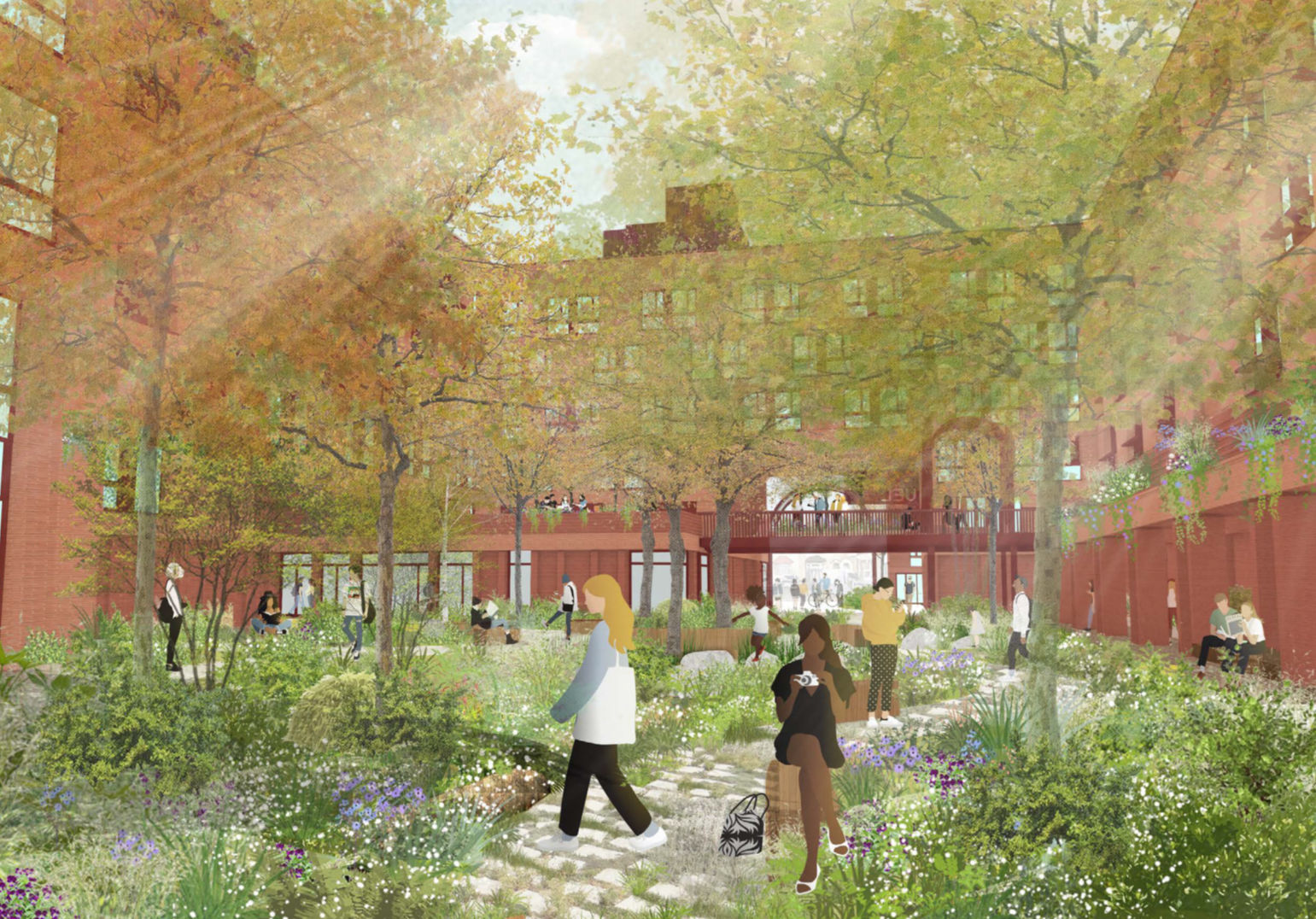Image of a newly proposed development for UEL Stratford
*This article was written on 19th September 2023 and updated in October 2023 which included the specific date that the Biodiversity Net Gain requirements will become mandatory – 12th February 2024
A recent report from The Royal Town Planning Institute has found that 61% of planners cannot confirm they’ll have resources in place to meet the Biodiversity Net Gain requirements by November*. There seems to be a considerable gap between knowledge and action, with many planners expressing low levels of confidence in delivering the practical requirements of Biodiversity Net Gain. No wonder 78% of those surveyed believed that Biodiversity Net Gain practice would be improved with additional ‘guidance, advice and support.’
What is Biodiversity Net Gain?
Biodiversity Net Gain is a way to contribute to the recovery of nature while developing land. It provides an approach to retaining and ensuring that habitats beneficial to wildlife are in a better state than before development. There is also an abundance of research that shows how green spaces can improve human health and well-being. Now, there is a regulatory requirement for new developments in England to provide a minimum of 10% Biodiversity Net Gain as of November 2023*, making it mandatory for the built environment to officially play an important role in restoring our environment. It’s clear we need to quickly build our understanding and application of Biodiversity Net Gain best practice to avoid any future penalties. Here we provide a summary of what applicants need to know in order to help close that knowledge gap.
What does Biodiversity Net Gain require?
Developments will be required to demonstrate a measurable increase in biodiversity at the site based on the existing site habitats and their conditions, as well as the proposed habitats post-development. The mitigation hierarchy will be applied for each site as set out in the National Policy and Local Policies, with habitats requiring adequate retention, enhancement, or replacement with a similar habitat or one of the same or higher distinctiveness.
Proposals for onsite and/or offsite Biodiversity Net Gain must be secured, managed, and monitored for at least a 30-year period from the substantive completion of the development through a habitat management and monitoring plan (HMMP). It is anticipated that standard guidance on the requirements of the management plan, in addition to the requirements of BS4:2020 will be published in due course and will be secured through a likely planning condition. It’s important to note also that the requirement for Biodiversity Net Gain is in addition to providing mitigation, compensation, and enhancements for protected and notable species, such as bats and birds and other statutory and non-statutory requirements for planning.
What does this mean for applicants?
Prior to any development, the applicant will need to appoint a suitably qualified ecologist to undertake a site survey to determine the baseline habitats and their conditions. They will need to provide the ecologist with post-development landscape plans to be used in the Biodiversity Net Gain metric. A high-level Biodiversity Net Gain assessment can be undertaken early in the development stages to ensure Biodiversity Net Gain is considered in the project design. Collaborating with an ecologist and being able to calculate a score for multiple-design scenarios can make all the difference as early involvement leads to the success of the project and can prevent future delays regarding re-designs and offsite credit purchases. Communicating and explaining a robust Biodiversity Net Gain strategy will result in fewer queries and higher chances of a successful application.

A dusk emergence bat survey at Darwin Green, Cambridge
What is the best practice for a Biodiversity Net Gain strategy?
The optimal strategy for a development project would be to achieve Biodiversity Net Gain onsite by conserving onsite habitats and optimising the design to enhance biodiversity which delivers maximum benefits and a Biodiversity Net Gain of 10% or greater.
Where this is not possible, offsite enhancements can be explored and utilised to meet the requirements. Offsite options can be explored based on Biodiversity Net Gain units (also known as credits). The unit price will vary by location and by unit type and this could include:
- The purchase of registered offsite biodiversity units to be made by an approved biodiversity provider
- Direct provision of the habitat types in a suitable location provided by the applicant
- A biodiversity offset contribution to the LPA’s offsetting projects (if applicable)
- The purchase of statutory Biodiversity Credits from National Government as a last resort (awaiting further guidance)
What else do applicants need to consider?
Alongside Biodiversity Net Gain, stringent new national standards for sustainable drainage systems (SuDS) are expected in 2023 and will require drainage and flood strategies to fully integrate with the natural environment. There are opportunities for collaboration between habitat creation and SuDS to improve biodiversity and alleviate flood risk to create multi-functional green spaces within development proposals.
It’s intrinsically difficult to measure biodiversity. Nevertheless, the evolution of the Biodiversity Net Gain metric has been long awaited and has undeniably elevated the importance of biodiversity in developments. In conjunction with the existing Preliminary Ecological Appraisals (PEA) and/or Ecological Impact Assessments (EcIA), a Biodiversity Gains Plan, Biodiversity Net Gain will soon become standard practice across Councils in England. By presenting clear and effective Biodiversity Net Gain strategies and robust metrics, applicants can guarantee that wildlife is in a better state after development than it was before, all while bridging the gap in our understanding.
Stacey Cougill, Director
Stacey leads the ecology and conservation aspects of the business. She has delivered a wide range of sustainability projects of all scales over the last 19 years which includes offsetting using bespoke nature-based solutions. Stacey’s experience includes large complex sustainability developments for the corporate and built environment with a specific focus on ecology and conservation.





